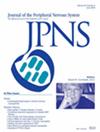Two new mouse models of Gjb1-associated Charcot–Marie–Tooth disease type 1X
Abstract
Background
Charcot–Marie–Tooth disease type 1X is caused by mutations in GJB1, which is the second most common gene associated with inherited peripheral neuropathy. The GJB1 gene encodes connexin 32 (CX32), a gap junction protein expressed in myelinating glial cells. The gene is X-linked, and the mutations cause a loss of function.
Aims
A large number of disease-associated variants have been identified, and many result in mistrafficking and mislocalization of the protein. An existing knockout mouse lacking Gjb1 expression provides a valid animal model of CMT1X, but the complete lack of protein may not fully recapitulate the disease mechanisms caused by aberrant CX32 proteins. To better represent the spectrum of human CMT1X-associated mutations, we have generated a new Gjb1 knockin mouse model.
Methods
CRISPR/Cas9 genome editing was used to produce mice carrying the R15Q mutation in Gjb1. In addition, we identified a second allele with an early frame shift mutation in codon 7 (del2). Mice were analyzed using clinically relevant molecular, histological, neurophysiological, and behavioral assays.
Results
Both alleles produce protein detectable by immunofluorescence in Schwann cells, with some protein properly localizing to nodes of Ranvier. However, both alleles also result in peripheral neuropathy with thinly myelinated and demyelinated axons, as well as degenerating and regenerating axons, predominantly in distal motor nerves. Nerve conduction velocities were only mildly reduced at later ages and compound muscle action potential amplitudes were not reduced. Levels of neurofilament light chain in plasma were elevated in both alleles. The del2 mice have an onset at ~3 months of age, whereas the R15Q mice had a later onset at 5–6 months of age, suggesting a milder loss of function. Both alleles performed comparably to wild type littermates in accelerating rotarod and grip strength tests of neuromuscular performance.
Interpretation
We have generated and characterized two new mouse models of CMT1X that will be useful for future mechanistic and preclinical studies.

 求助内容:
求助内容: 应助结果提醒方式:
应助结果提醒方式:


